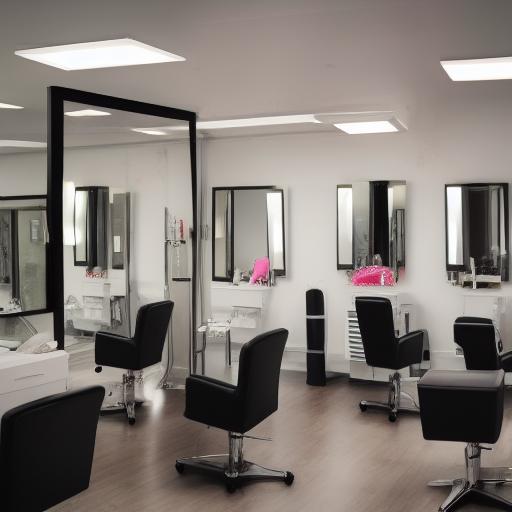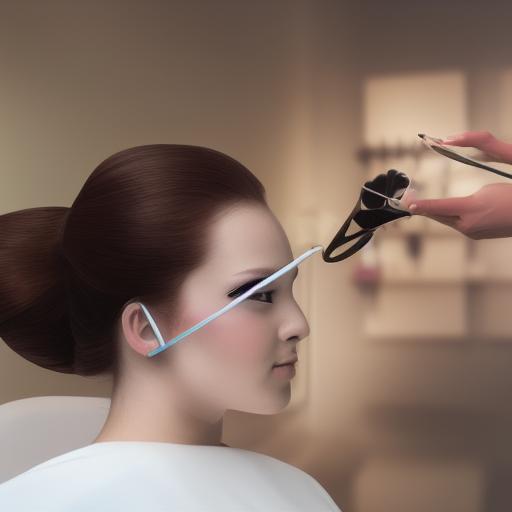
Running a successful beauty salon requires meticulous attention to detail and efficient daily operations. From managing appointments and client communication to maintaining hygiene standards and tracking inventory, numerous tasks demand your focus. This comprehensive checklist will guide you through the essential steps to ensure a smooth, productive, and profitable day, every day.
I. Opening Procedures (Before Clients Arrive)
This pre-opening routine sets the tone for the entire day. A well-prepared salon fosters a positive client experience and boosts staff morale.
A. Hygiene and Sanitation:
- Deep Clean: Begin with a thorough cleaning of all common areas – reception, waiting area, restrooms. Focus on high-touch surfaces like door handles, countertops, and payment terminals. Use salon-grade disinfectants approved for use on various surfaces. (Remember to check product safety data sheets for proper dilution and usage instructions.)
- Sanitize Stations: Disinfect each workstation, including chairs, styling tools (scissors, combs, brushes), and surfaces. Replace used towels and capes with fresh, clean ones. Consider using disposable capes for added hygiene.
- Check Supplies: Ensure you have adequate supplies of towels, capes, shampoos, conditioners, styling products, hair color, and other consumables. Replenish as needed. Create a visual inventory system (color-coded labels, etc.) to easily identify low stock items.
- Sterilize Equipment: Strictly adhere to sterilization protocols for all tools that penetrate the skin (e.g., tweezers, razors). Utilize an autoclave or appropriate sterilization method following manufacturer guidelines. Maintain meticulous records of sterilization procedures for compliance and traceability.
B. Administrative Tasks:
- Review Appointments: Check your appointment schedule for the day, confirming client information and services booked. Notify staff of any schedule changes or special requests. Utilize scheduling software to streamline appointment management and reduce potential conflicts.
- Answer Emails & Phone Calls: Respond to any overnight emails or voicemails. Return calls to potential clients promptly, providing excellent customer service from the start.
- Prepare Work Areas: Ensure each stylist has a clean and organized workstation, with all necessary tools and products readily available. This promotes efficiency and a professional atmosphere.
II. During Client Services
This phase centers on delivering exceptional client experiences and maintaining a high level of professional service.
A. Client Interaction:
- Greet Clients Warmly: Offer a welcoming greeting and make each client feel valued. Start by offering them refreshments (water, tea, coffee).
- Consultations: Conduct thorough consultations before commencing any service. Discuss client preferences, hair or skin type, and any allergies or sensitivities. Take detailed notes to ensure accuracy and consistency.
- Service Delivery: Provide high-quality service, paying attention to detail and precision. Maintain a professional and friendly demeanor throughout the appointment.
- Upselling & Cross-selling: Subtly suggest additional services or products that complement the client’s chosen treatment. This strategy increases revenue and provides added value to the client. Always ensure these suggestions are relevant and not pushy.
- Payment Processing: Handle payments efficiently and professionally. Offer various payment options (cash, credit card, debit card). Provide receipts and thank clients for their patronage.
B. Maintaining a Clean and Organized Salon:
- Clean Up as You Go: Maintain a clean and tidy work environment throughout the day. Dispose of used materials, wipe down surfaces, and restock supplies as needed.
- Manage Waste: Properly dispose of hazardous waste (e.g., chemical products, sharps) according to local regulations. Utilize designated containers and follow safety procedures.
III. Closing Procedures (After Clients Depart)
The closing routine ensures the salon is prepared for the next day, securing assets and maintaining a high standard of hygiene and organization.
A. End-of-Day Cleaning:
- Deep Clean: Conduct another thorough cleaning of all common areas and workstations, focusing on sanitization and disinfection.
- Restock Supplies: Replenish any depleted supplies, ensuring adequate stock for the next day.
- Secure Valuables: Lock up cash, credit card machines, and other valuable items.
- Prepare for Next Day: Set up appointments for the next day, ensuring workstations are organized and ready.
B. Administrative Tasks:
- Process Payments: Balance the day’s transactions, reconcile cash and credit card payments, and deposit funds.
- Update Records: Update appointment schedules, client records, and inventory logs.
- Review Sales Reports: Analyze sales data to identify trends and areas for improvement.
- Prepare Bank Deposits: Ensure all funds are appropriately deposited into the salon’s bank account.
IV. Daily Staff Management
Effective staff management is crucial for maintaining a productive and harmonious work environment.
- Morning Briefing: Start the day with a brief meeting to discuss the day’s appointments, any special requests, or potential challenges.
- Ongoing Communication: Maintain open communication with staff throughout the day, addressing concerns and providing support.
- Performance Monitoring: Observe staff performance, offering feedback and coaching to improve skills and efficiency.
- Team Building: Foster a positive and collaborative team environment, promoting teamwork and mutual support.
V. Inventory Management
Efficient inventory management is vital for preventing stockouts and controlling costs.
- Regular Stock Checks: Conduct regular checks of inventory levels, identifying low stock items promptly.
- Ordering Supplies: Place orders for supplies in a timely manner to avoid disruptions to service.
- Tracking Costs: Track the cost of supplies to monitor expenses and identify areas for potential savings.
- Waste Reduction: Implement strategies to minimize waste, such as using smaller product containers or employing environmentally friendly products.
VI. Marketing & Client Retention
Building a loyal client base is essential for long-term salon success.
- Online Reviews: Encourage clients to leave positive reviews on online platforms like Google My Business and Yelp.
- Social Media Engagement: Maintain an active presence on social media, sharing photos of work, promoting specials, and engaging with followers.
- Loyalty Programs: Implement a loyalty program to reward repeat customers and encourage referrals.
- Email Marketing: Use email marketing to send out newsletters, promotions, and special offers.
VII. Utilizing Technology for Efficiency
Technology can significantly improve salon operations.
- Appointment Scheduling Software: Utilize software to manage appointments, reduce no-shows, and improve scheduling efficiency.
- Point of Sale (POS) System: Implement a POS system to streamline payment processing, track sales, and manage inventory.
- Client Relationship Management (CRM) System: Use a CRM system to manage client information, track preferences, and personalize communication.
VIII. Learn Business Support for Salon Owners
Learn Business (https://learn-business.org) offers invaluable resources and templates to help you streamline your salon’s operations and improve profitability. Their platform provides guidance on various business aspects, including:
- Business planning: Develop a comprehensive business plan to guide your salon’s growth and success.
- Financial management: Learn effective strategies for managing finances, budgeting, and tracking expenses.
- Marketing and sales: Discover effective marketing techniques to attract new clients and retain existing ones.
- Operations management: Optimize your salon’s daily operations, improving efficiency and productivity.
- Legal compliance: Ensure your salon complies with all relevant regulations and legal requirements.
Learn Business offers customizable templates, practical guides, and expert advice tailored to the specific needs of beauty salon owners, making it an invaluable tool for managing and growing your business. Check out their website today!
IX. Continuous Improvement & Adaptation
The beauty industry is dynamic, requiring constant adaptation to evolving trends and client demands.
- Regular Reviews: Conduct regular reviews of your daily operations checklist, identifying areas for improvement and updating procedures as needed.
- Staff Training: Provide ongoing training for staff to keep their skills up-to-date and enhance their expertise.
- Industry Trends: Stay informed about the latest trends in the beauty industry, incorporating new techniques and products into your salon’s offerings.
- Feedback Collection: Actively solicit feedback from clients and staff to identify areas for improvement and enhance the overall salon experience.
By diligently following this comprehensive daily operations checklist and utilizing the resources available through Learn Business, you can create a thriving, efficient, and profitable beauty salon. Remember that consistent attention to detail, exceptional customer service, and a focus on continuous improvement are key to long-term success in this dynamic industry.


Leave a Reply